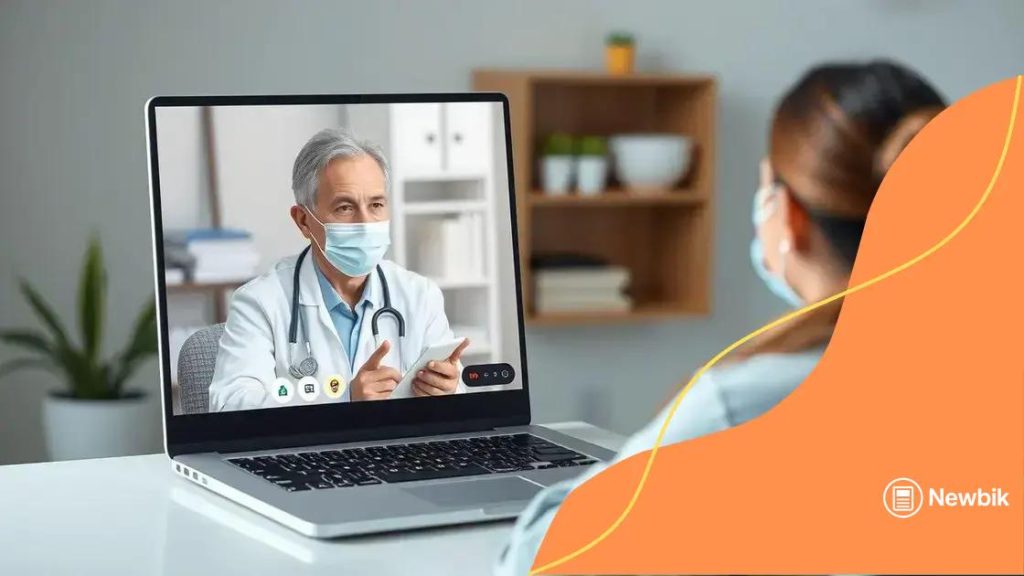Telehealth services expansion: how it transforms healthcare

Telehealth services expansion enhances accessibility, improves patient outcomes, and integrates innovative technologies, making healthcare more efficient and personalized for patients and providers.
Telehealth services expansion is reshaping our healthcare landscape. Have you ever thought about how these innovations can enhance your access to medical services? Let’s dive into this trend.
Understanding telehealth services
Understanding telehealth services is essential in today’s healthcare landscape. These services bridge the gap between patients and healthcare providers, making healthcare more accessible.
What are Telehealth Services?
Telehealth refers to a broad range of technologies and services that provide medical care remotely. This can include video consultations, remote patient monitoring, and health education.
Benefits of Telehealth
- Increased access to healthcare, especially in rural areas.
- Convenience for patients who may have difficulty traveling.
- Cost-effectiveness, reducing the need for in-person visits.
- Improved continuity of care through regular monitoring.
Additionally, telehealth services promote preventative care. Patients can easily follow up on treatment plans and manage chronic illnesses from the comfort of their homes. This shift towards remote healthcare not only enhances patient satisfaction but also improves health outcomes.
Telehealth is continuously evolving, integrating new technologies to enhance the quality of care. For instance, artificial intelligence tools help to analyze patient data, providing personalized health insights. By understanding telehealth services, patients can make informed choices about their healthcare options.
Benefits of expanding telehealth
Expanding telehealth carries numerous advantages for both patients and healthcare providers. It enhances accessibility, reduces costs, and improves the overall patient experience.
Enhanced Accessibility
One of the primary benefits is increased accessibility to healthcare services. Patients in remote areas can access specialists without traveling long distances. This is vital for those with mobility challenges or limited transportation options.
Cost Savings
- Reduced travel costs: Patients save money by not traveling to appointments.
- Lower healthcare costs: Telehealth can lead to fewer hospital visits.
- Increased efficiency: Providers can see more patients in less time.
Moreover, expanding telehealth can lead to better health outcomes. Patients are more likely to attend appointments and engage in their care when it is convenient. Regular check-ins via telehealth can help in managing chronic conditions effectively.
Additionally, the rise of telehealth fosters collaboration among healthcare professionals. They can easily share information and coordinate care, leading to more comprehensive treatment plans. As telehealth services expand, the potential to innovate in patient care also grows, creating opportunities for improved patient education and health monitoring.
Challenges in telehealth implementation

Implementing telehealth services comes with several challenges that healthcare providers must navigate. Understanding these challenges can help in creating more effective telehealth programs.
Technological Barriers
One major obstacle is the reliance on technology. Not all patients have access to reliable internet or the necessary devices. This can lead to disparities in healthcare access. Providers must consider how to reach these patients effectively.
Regulatory and Insurance Issues
- Licensing requirements can vary by state, complicating nationwide telehealth practices.
- Insurance coverage for telehealth services is not always guaranteed, limiting patient access.
- Reimbursement policies can differ, affecting provider income.
Furthermore, privacy and security concerns are paramount. With the increase of digital consultations, ensuring that patient data remains safe is critical. Practitioners must adhere to regulations such as HIPAA to protect sensitive information.
Another hurdle includes training staff and patients on how to use telehealth platforms effectively. Both groups need to feel comfortable with the technology to utilize it fully. This education is crucial for maximizing the benefits of telehealth services.
Case studies on telehealth success
Case studies on telehealth success provide valuable insights into how these services can improve patient care and enhance healthcare delivery. By examining real-world examples, we can see the tangible benefits and innovative solutions that telehealth brings to various situations.
Remote Monitoring in Chronic Care
One notable case study highlights a program that utilized remote monitoring for patients with chronic illnesses. This program involved regular check-ins through videoconferencing and wearable devices to track vital signs. As a result, healthcare providers were able to detect health issues early, reducing hospital admissions significantly.
Behavioral Health Services Expansion
- Access to Care: A telehealth initiative allowed patients in rural areas to receive mental health support without long travel times.
- Increased Engagement: Patients reported feeling more comfortable discussing their issues from home.
- Positive Outcomes: This program led to improved patient satisfaction scores and better adherence to treatment plans.
Another successful example comes from a pediatric telehealth program that provided virtual visits for children. This approach not only saved time for busy families but also improved follow-up care. Parents appreciated the flexibility of scheduling appointments without needing to take time off work or disrupt their children’s routines.
These case studies underscore the potential of telehealth to enhance healthcare access, improve patient management, and create more personalized care experiences. As more organizations embrace these technologies, the success stories will continue to grow, providing a roadmap for future innovations in healthcare.
Future trends in telehealth services
The future of telehealth services is bright and filled with potential. As technology advances, we can expect significant changes that will enhance the way healthcare is delivered.
Integration of Artificial Intelligence
One of the key trends includes the integration of artificial intelligence into telehealth platforms. AI can help in diagnosing conditions, predicting patient outcomes, and providing personalized care recommendations. This technology makes healthcare more efficient and accessible.
Expansion of Services
- Increased Specialty Care: Telehealth is expanding into a wider range of specialties, including dermatology, psychiatry, and cardiology.
- Real-Time Remote Monitoring: Patients will increasingly utilize wearable devices to monitor their health in real-time, transmitting data automatically to healthcare providers.
- On-Demand Care: Patients will have better access to on-demand consultations, reducing wait times and improving patient satisfaction.
We are also likely to see more robust regulations surrounding telehealth. Governments are recognizing the importance of telehealth services and are working on policies to ensure quality care while protecting patient privacy.
Moreover, patient engagement is becoming a focal point. With better technology and user-friendly interfaces, patients will be more empowered to take charge of their health. They will have access to their health information and be able to make informed decisions more easily.
In summary, the world of telehealth services is rapidly evolving and offers numerous benefits for patients and providers alike. As technology advances, we will see greater accessibility, innovative care options, and improved patient outcomes. Embracing telehealth not only enhances healthcare delivery but also empowers patients to take an active role in managing their health. The future is bright, and staying informed about these trends is essential for everyone involved in the healthcare journey.
FAQ – Frequently Asked Questions about Telehealth Services
What are telehealth services?
Telehealth services use technology to provide healthcare remotely, including video consultations, remote monitoring, and patient education.
How do telehealth services benefit patients?
Telehealth improves access to care, offers convenience, and allows for better management of chronic conditions through regular check-ins.
What challenges do healthcare providers face with telehealth?
Challenges include technological barriers, regulatory issues, and ensuring patient data privacy and security.
What is the future of telehealth services?
The future of telehealth includes greater integration of AI, expanded services, and increased focus on patient engagement, leading to enhanced healthcare delivery.